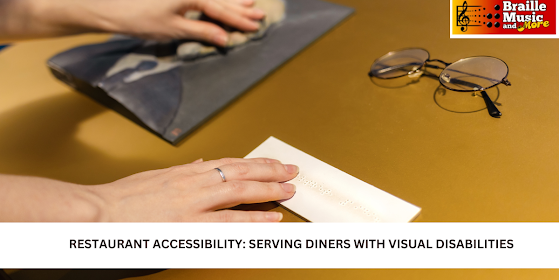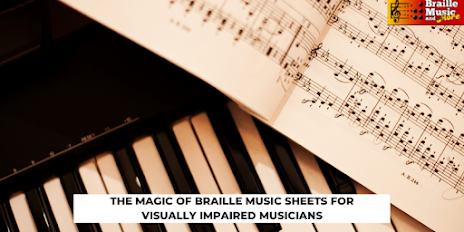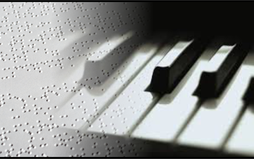Restaurant Accessibility: Serving Diners with Visual Disabilities
What's not to love about dining out? Quality time with friends or family; creating an inclusive dining experience ensures equal rights while increasing customer satisfaction and loyalty.
In this blog post, we will explore methods
restaurants can implement and with the help of a braille transcriber accommodate
diners with visual disabilities.
1.Clear
Signage and Menus:
Clear signage and menus are crucial for
individuals with visual disabilities to navigate and understand the
restaurant's offerings. Use braille transcription on
menus and signage for maximum readability. Braille or audio menus provide
alternative solutions for those requiring them.
2.Staff
Training:
Provide restaurant staff with training on
effectively communicating and assisting customers with visual disabilities.
Encourage patience, respect, and understanding among their members. Teach them
with the help of braille transcription services how to guide diners to their
tables while explaining their surroundings so that they may navigate
confidently throughout the restaurant.
3.Lighting
and Contrast:
Light is vital for individuals with visual
impairments, so ensure your restaurant has adequate lighting. Eliminate dimly
lit areas or harsh lighting that could cause discomfort. Using contrasting
colours on walls, floors, and furniture will help visually impaired diners
navigate more easily through your establishment.
4.Table
Layout and Position:
In order to maximize accessibility in your
restaurant, take care when designing its layout. Leaving enough space between
tables for wheelchair manoeuvrability and guide dog accommodations, removing
obstacles from pathways to prevent accidents or trip hazards, and offering
seating near natural lighting sources can benefit diners who rely on residual
vision.
5.Braille
and Large Print Materials:
Provide menus, brochures, and other important
information in Braille with the help of braille services or large print
format to allow individuals with visual impairments to independently navigate
menus or read relevant information. Provide clear instructions for how
individuals with visual impairments may request these alternative formats of
materials.
6.Technology
and Apps:
Leverage technology to increase accessibility
at restaurants. Offering QR codes with links to accessible menus or providing
restaurant info through smartphone apps will allow diners to easily access
menus, allergen information, and other details independently and make informed
choices for themselves.
7.Assistive
Devices:
Consider providing assistive devices to
enhance the dining experience for individuals with visual disabilities.
Text-to-speech devices, audio description headsets or magnifying glasses can
greatly assist visually impaired customers in reading menus or identifying food
items.
8.Staff
Communication:
Encourage staff members to use descriptive
language when communicating with diners with visual disabilities. Ask how you
should guide a visually impaired customer and use descriptive terms when
outlining items on a menu or dishes being served.
Conclusion
By adopting these accessibility measures like braille
transcription services, restaurants can create a welcoming environment
for diners with visual disabilities. Prioritizing accessibility makes good
business sense and fosters inclusivity and shows commitment to all customers.
By welcoming these changes into society
without barriers to dining out - let's work together towards making every
dining experience an enjoyable one for individuals with visual disabilities!
Embrace inclusiveness with Braille Music and
more. Require Braille transcription? Partner with us and explore our website www.braillemusicandmore.com for expert assistance and bridge the gap to accessible content



Comments
Post a Comment